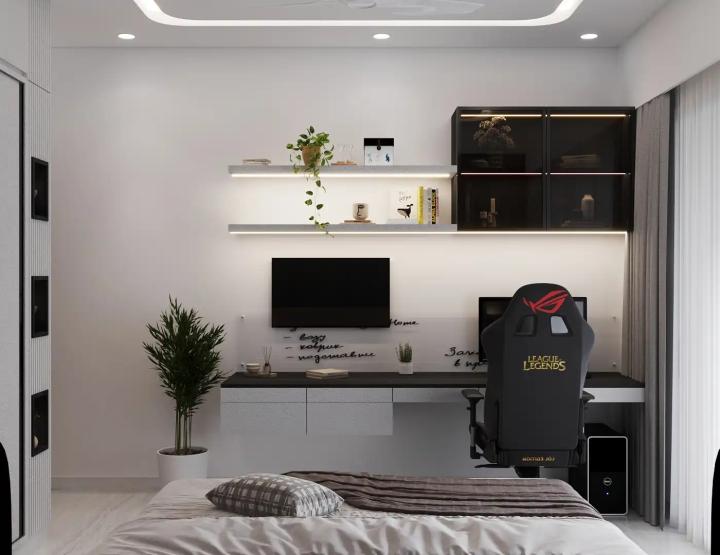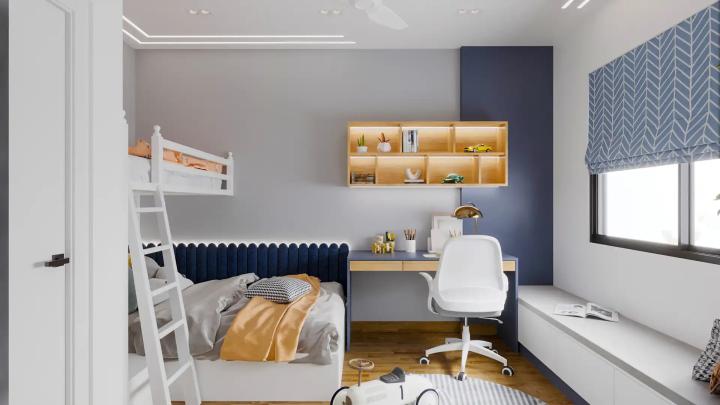Notifications
Business » Automotive » How to Choose the Best Colors for a Study Room?


Choosing the right colors for a study room design is crucial to creating a space that fosters productivity, focus, and comfort. The colors in a study room can significantly impact your mood, energy levels, and even your concentration. Whether you're working on a project, studying for exams, or working remotely, the ambiance of your study room plays an important role in achieving optimal performance. In this article, we will guide you through the process of selecting the best colors for your study room, considering psychological effects, lighting, and design principles.
Color has a profound psychological impact on our emotions and cognitive functions. In a study room design, the right color can help you concentrate, relax, and even boost creativity. Understanding the psychological effects of different colors can help you create the ideal environment for studying, reading, or working.
Here are some reasons why color choice matters in a study room:
Let’s dive into how to choose the best colors for your study room to create the perfect environment for work and learning.
When selecting colors for your study room design, several factors need to be considered. Below, we’ll walk you through some essential tips and the psychological impact of various colors.
Different colors evoke different emotions and reactions. Below are some of the most popular colors for study rooms, along with their psychological effects:
Blue
Blue is often considered one of the best colors for a study room. It is known to promote focus, calmness, and clear thinking. Blue shades help reduce stress and anxiety, making them ideal for intense study sessions or work environments. Lighter blues are calming, while darker blues can add sophistication to the room.
Green
Green is another excellent choice for a study room design. It is the color of nature and symbolizes growth, balance, and harmony. Green promotes creativity, reduces eye strain, and creates a tranquil atmosphere, making it suitable for long hours of reading or writing.
Yellow
Yellow is a stimulating color that represents energy, optimism, and happiness. It is known to increase creativity and enhance mental alertness. A bright yellow accent wall or accessories can help inspire new ideas, but be careful not to overdo it, as too much yellow can become overwhelming.
White
White is clean, neutral, and versatile. It reflects light well, making the room feel more spacious and brighter. While it may not be the most exciting color, white is an excellent backdrop for other colors, allowing your furniture and decor to stand out. It’s ideal if you want a minimalist, clutter-free study room.
Gray
Gray is a sophisticated and calming color. It can create a serene and professional atmosphere, perfect for serious study or work sessions. Lighter gray tones help maintain a clean and modern aesthetic, while darker grays can add depth and elegance to the room.
Beige and Neutral Tones
Neutral colors such as beige, taupe, and light brown are perfect for creating a warm and inviting study room. These shades are soft and not overwhelming, which makes them ideal for a cozy, comfortable study environment. Neutral tones also work well if you want to add natural textures and materials to your study room design.
The size of the study room and the natural light it receives play a significant role in determining which colors to choose.
Small Study Rooms: For smaller rooms, it’s best to use lighter colors like white, light gray, or soft pastels. These colors can make the room feel larger and more open. Bright colors like soft blues and greens can also help brighten up the space without making it feel too crowded.
Large Study Rooms: If you have a large study space, you can experiment with deeper hues like navy blue, charcoal gray, or muted greens. These colors create a cozy, intimate atmosphere in larger rooms and can help break up the expansive space.
Natural Light: The amount of natural light your study room gets can also impact your color choice. Rooms that get a lot of natural light can handle darker tones, as the light will balance out the room’s mood. Rooms with limited natural light should be painted in lighter colors to help brighten the space.
Artificial Lighting: Consider the type of lighting you use in the room as well. Warm lighting can enhance earthy tones and deep colors, while cooler lighting works well with blues and greens. When choosing the color for your study room, think about how the colors will look under different lighting conditions.
A study room is primarily a space for work and learning, so it’s essential to choose colors that help you focus. To promote productivity, opt for colors that create a calm yet energetic environment.
Balance of Warm and Cool Colors: A study room design that includes a mix of warm and cool colors can strike the perfect balance. You can choose a neutral background like light gray or beige and then add pops of color like blue or yellow to enhance creativity and focus.
Accent Colors: Consider using accent colors in areas where you need extra motivation or energy, such as near your desk or bookshelves. Small splashes of yellow, red, or orange can stimulate the mind and keep you energized throughout long study sessions.
The best color for your study room is ultimately the one that makes you feel comfortable and motivated. If you enjoy a specific color or have a personal connection to a shade, incorporate it into the design. However, remember to keep it balanced, as an overuse of any color can lead to distraction or fatigue.
When designing a study room, you don’t have to limit yourself to just one color. Combining complementary colors can add depth and interest to the room.
Color plays an essential role in study room design, influencing your mood, productivity, and focus. By understanding the psychological effects of different colors, matching your choices with the room’s size and lighting, and considering your personal preferences, you can create a space that maximizes your ability to concentrate and work effectively. Whether you choose calming blues, energizing yellows, or sophisticated neutrals, the right color scheme will help transform your study room into a productive and inspiring space. Don’t be afraid to experiment with different shades and combinations to find the perfect look for your study environment. The key is to choose colors that not only enhance the room’s aesthetic but also support your work and study goals.